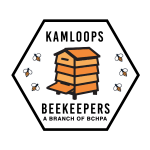Beginners
Questions;
- What are the needs in my yard if I want to start beekeeping?
- I have a neighbour who doesn’t like bees but I’m really passionate about having a hive. Any suggestions?
- How much equipment do I need to have (how many frames?) when I start?
- What is some essential equipment for beekeeping?
- Which is the most challenging season for a beekeeper?
- What do I need to remember?
- What about equipment maintenance, storage, and cleaning?
- Where can I learn more about beekeeping?
Responses;
- A hive needs sun exposure and bear proof fencing and/or electric fence. Need enough room and put a hive on stands or a small pallet for each hive to prevent vibrations upsetting another hive. Add roof system if possible.
- Check Bylaws, educate neighbours on how beneficial the bees are on our survival and their garden,
Connect with your neighbours and bribe them with honey samples or full jars. - 10 frames to start and a super box, for one hive $750 for equipment and bees and start with 2 hives If you decide to be a beekeeper, take a course, $250 (beginner).
- Smoker, PPE (suit & veil, may use gloves), hIves, hive tool, brush, wax melter, extracter, sieve, excluder…
- Winter because this is when you are most likely to lose them…. But all seasons have their challenges. Swarm season (April to August). Winter to ensure enough feed and that mite treatment was successful.
- You need space to maintain, repair and build new equipment. These are all winter jobs.
- Learn from other successful beekeepers, mentors, books and courses. Avoid the internet. The University of Guelph videos and the Fat Beeman on Youtube from Georgia are good for learning and for entertainment.. Attend meetings field days, visit the provincial website and explore other peoples hives with them. The Kamloops Club’s bee mentorship program for new beekeepers – very helpful
